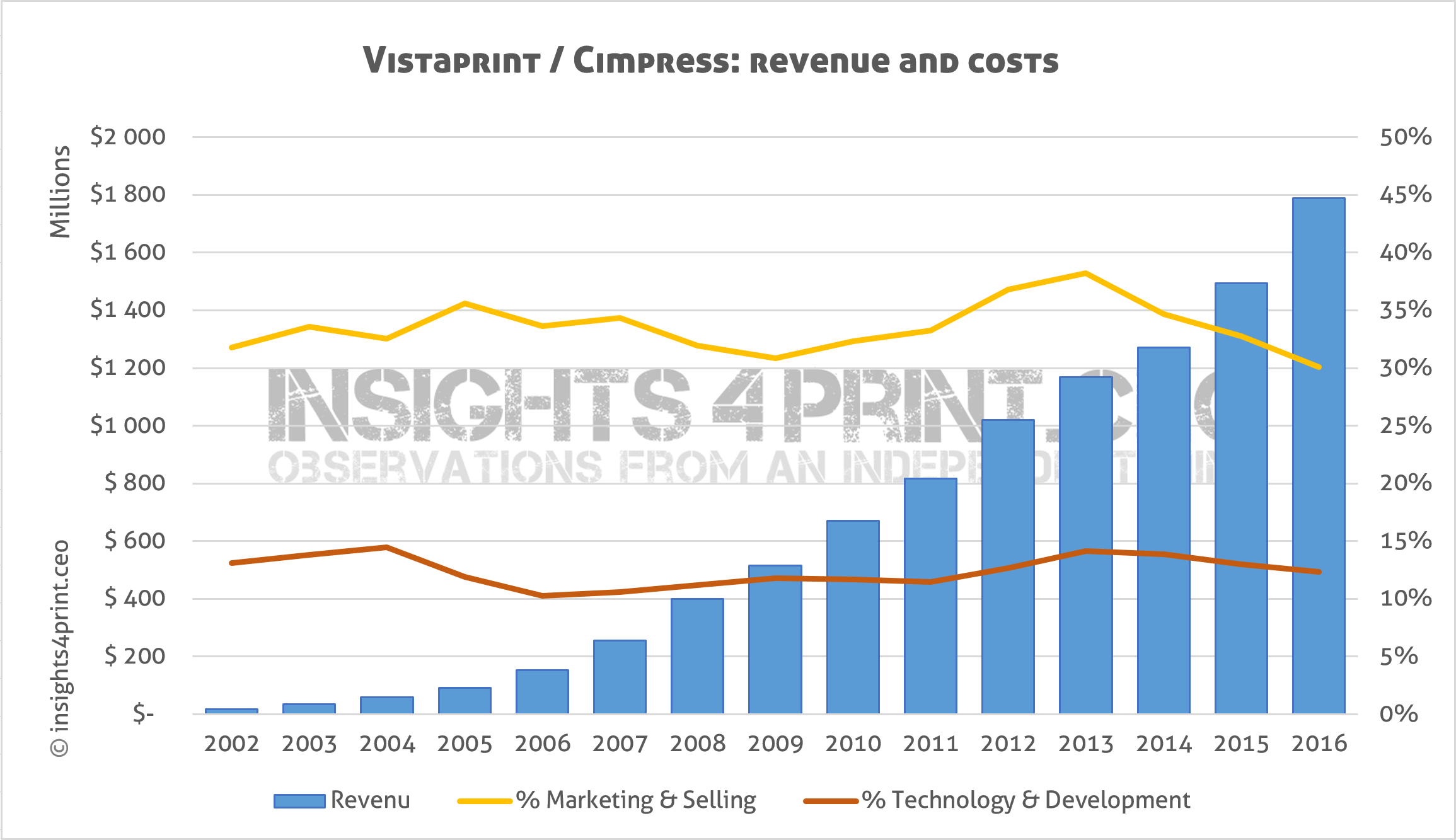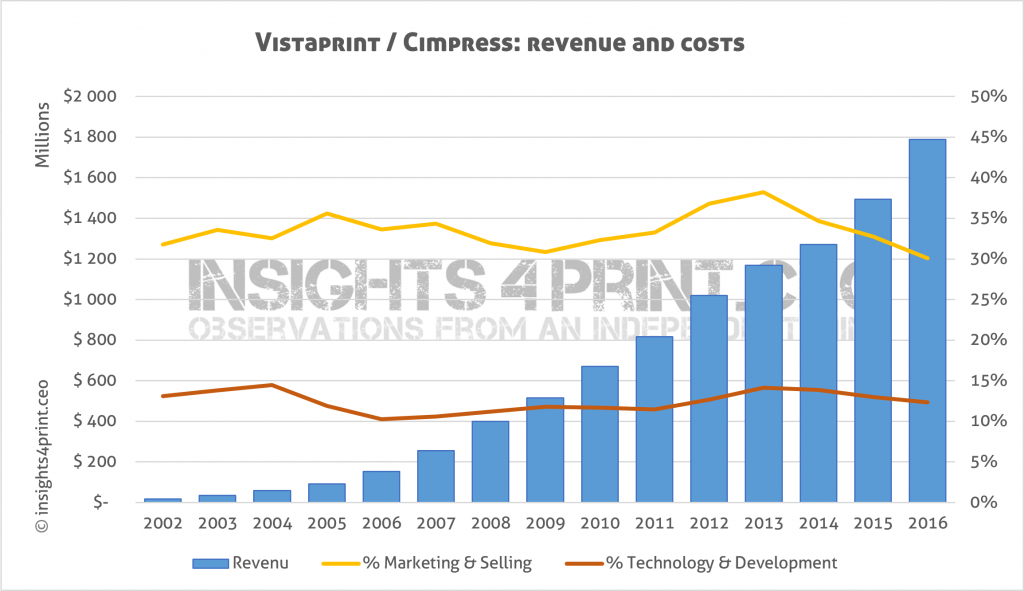
It is a necessity: investing in marketing and sales. Even in times when cost cutting is daily business. But how much do printing companies invest in marketing and sales? What is the benchmark for printers? Well, let’s take a look at Vistaprint (Cimpress).
CONTENTS: Vistaprint (Cimpress) | A few anecdotes | Why is this important?
You probably know Vistaprint and the parent company Cimpress (new name for the Vistaprint holding since 11/2014). What you might not know, is the fact that they have continuously grown, from 16,8 million US $ in 2002 to 1,79 billion US $ in 2016. And in that period, they showed a profit every year, except in 2005. And they did this with an average order value of only 42,99 US $ (FY 2015). So I guess we can say it’s a rather successful printing company.
To get some more insight in the company, the annual reports are a good starting point. Being a publicly traded company, Vistaprint and now Cimpress publish extensive annual reports, which you can find online. I’ve read the annual reports from 2006 (with figures going back to 2002) to the most recent one from fiscal year 2015. An interesting read…
The most important facts are in the graph below: the evolution of the revenue, but also the percentage of that revenue that went to marketing & sales and to technology & development. Two pillars of the success of Vistaprint. And these figures are revealing: Vistaprint has invested consistently 30% or more of the revenue in marketing & sales! Here is your benchmark for your marketing and sales spending. (*)

So that is the story of Vistaprint and Cimpress, which is quite different from many, or even most, printing companies. To put their efforts into perspective, let me tell you a few anecdotes…
Anecdote 1: the broken telephone
It must have been about five years ago. I had a meeting with the manager of a purchasing cooperation, representing a few dozen printing companies. He had visited one of his members a few weeks before. That printer told him – a bit shocked – that his phone hadn’t rang for more than a week! He even called the phone company to check if there was some technical problem with his phone… He had never invested in marketing and sales, he was used that customers came in, without any effort… He was desperate now that this wasn’t the case anymore. He had no idea what marketing, what internet marketing was.
Anecdote 2: the expensive finishing
Over a decade ago, I got a brochure from a printing company. They had just purchased a new, wonderful machine for a very unique finishing. And in the brochure they explained all the benefits of that technique. But, curiously, they didn’t use it in the brochure… So when I met the printer a few weeks later, I asked him why. “Do you know how expensive that is!” […sigh…] Walk the talk dear printer… If you want to sell something expensive to your customer, you should start using it yourself.
Anecdote 3: the wrong language
Around the same time, on a sunny day in Summer time, I was riding my bike. And I came across a small printer in my neighborhood. A ‘mom and pop shop’, in an ordinary street in the suburbs. They had a poster on the window: “Now also digital print!” Ok, I know what digital print is, you know what digital print is, but the people passing by? They have absolutely no idea what that means… And that is often the case: printers don’t talk the language of their customers. A potential customer is interested in the fact that he can order just one copy, at a reasonable price. That we, industry professionals, call that ‘digital print’, is completely irrelevant to him.
Why is this important?
As a business you need to market yourself, otherwise customers won’t be able to find you. And those customers need to understand what you’re talking about, they must see the benefits of working with you, the value of your products. They don’t need to know or see the equipment you will use to provide that product.
Internet searches are these days often the first step when somebody wants to buy something. Internet marketing therefor is very, very important. And when promoting yourself via print, you really need to walk the talk. Show, don’t tell!
(*) This is what is included in ‘marketing & selling’ according to the annual report: “Marketing and selling expense consists primarily of advertising and promotional costs; payroll and related expenses for our employees engaged in marketing, sales, customer support and public relations activities; amortization of certain acquired intangible assets, including customer relationships and trade names; and third-party payment processing fees.”





I follow this site closely too, it’s our competitors.